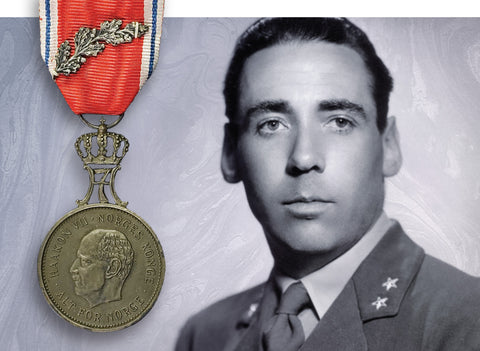
Sole Survivor: This Commando Evaded the Nazis in the Arctic for 63 Days
In late March 1943 25-year-old Norwegian commando Jan Baalsrud, three other Special Operations Executive officers and a crew of eight sailed northeast from the Shetland Islands aboard the fishing boat Brattholm. The four-man team was to recruit resistance members in far northern Norway with an eye toward sabotaging enemy installations. Their jumping-off point was an island north of Tromsö, Norway, 270 miles above the Arctic Circle.
The mission soon went awry when Baalsrud and companions revealed themselves to a shopkeeper they mistakenly believed to be their contact. Fearing he was being tested by the Germans, the man alerted authorities to the team’s presence.
The commandos returned to Brattholm , but on March 30 a German warship discovered the boat. After lighting a time-delay fuze to destroy their cache of explosives, the team and crew made for shore in dinghies. The detonation completely destroyed Brattholm , but in a subsequent firefight the Germans killed one of the team and captured everyone else—except Baalsrud. Having swum ashore, the young Norwegian killed a German officer and wounded a soldier while making good his escape.
That evening Baalsrud, soaked to the skin and having lost a boot, chanced upon two teenage cousins out for a walk. The girls took him home, where relatives provided food, dry clothes and replacement boots. The eldest boy then rowed Baalsrud to Ringvassoya Island, hoping the husband of the local midwife could transport the commando to the mainland. The man had left hours earlier, so Baalsrud kept on the move, traveling at night and sheltering by day with fellow Norwegians willing to help him. One sympathetic fisherman rowed him to the mainland and gave him a pair of skis.
Baalsrud was soon caught in an avalanche that broke one ski and swept away the other with his food satchel. Four days later he stumbled into the farmhouse of a family with resistance ties. Snow-blind and starving, he looked more dead than alive.
On April 12 his rescuers took the helpless Baalsrud east by boat across Lyngenfjord to a crude, remote hut the grateful commando nicknamed the “Hotel Savoy.” Despite his bravado, he was suffering terrible pain in his legs, and his toes had turned blackish gray with gangrene. Realizing the infection would spread, he used his sheath knife to cut off one of his big toes and part of another toe.
On the night of April 24 resistance members took Baalsrud by sled into the Revdal Mountains to meet a group from nearby Manndalen that would spirit him into Sweden, but their contacts weren’t waiting at the rendezvous point. Confident they were en route, the team left Baalsrud on his sled tucked snugly beneath a rocky overhang. It was a fortunate choice of shelter, as four days passed before resistance members could make it back up to the commando’s hiding place. After ensuring he was alive, they sent a message to Manndalen: “The fish yarn is completed and ready to be picked up.”
On May 11 the Manndalen team carried Baalsrud to lower ground and hid him in another cave. He remained there 17 days, during which he removed six more of his gangrenous toes and amputated a seventh to the middle joint.
Finally, two Sámi (Lapp) brothers volunteered to take Baalsrud into Sweden. They carried him on a pulk —a sled without runners—drawn by reindeer. A German patrol fired on the trio as they crossed the Swedish border.
Arriving in a Swedish hospital after 63 days in occupied Norway, Baalsrud was asked who had amputated his toes. The physician was stunned when the young man responded he had done it himself. There Baalsrud learned his team members had been tortured and executed.
Following Norway’s liberation Baalsrud was awarded the St. Olaf’s Medal with Oak Branch for his wartime service. “I am not the hero,” he insisted until his death at age 71 on Dec. 30, 1988. “The people in [the region of] Troms are.” Every July locals still gather for a 125-mile commemorative march along Baalsrud’s wartime escape route.
this article first appeared in Military History magazine
Facebook @MilitaryHistoryMagazine | Twitter @MilHistoryMag
